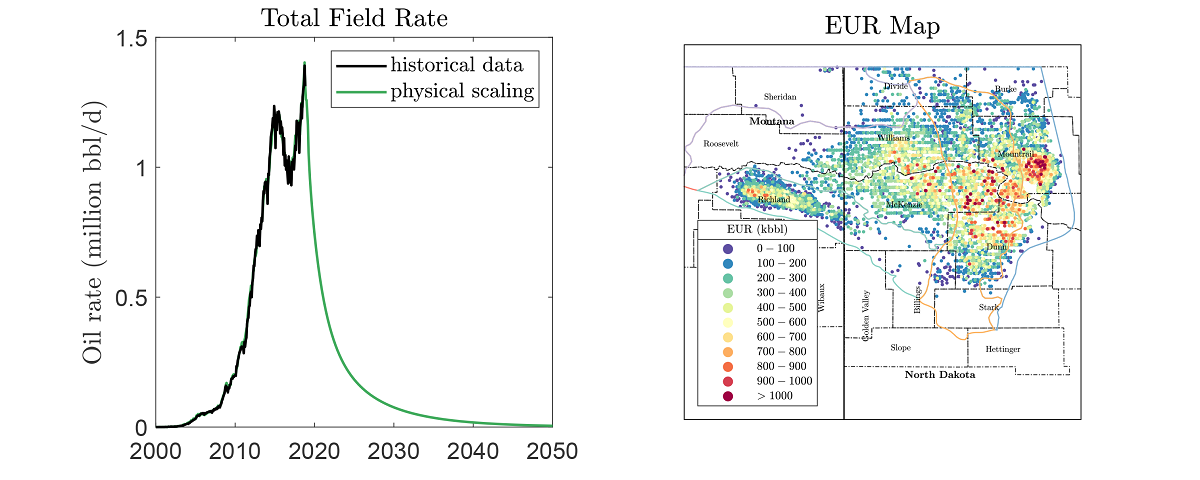A recent study by the Wall Street Journal reveals that the hydrofractured horizontal wells in shales have been producing less than forecasted by the industry with the empirical hyperbolic decline curve analysis (DCA). As an alternative to DCA, we introduce a simple, fast and accurate method of estimating ultimate recovery (EUR) in oil shales. We adopt a physics-based scaling approach to analyze oil rates and ultimate recovery from 14,888 active horizontal oil wells in the Bakken shale. To predict EUR, we collapse production records from individual horizontal shale oil wells onto two segments of a master curve: (1) We find that cumulative oil production from 4,845 wells is still growing linearly with the square root of time; and (2) 6,401 wells are already in exponential decline after approximately seven years on production. In addition, 2,363 wells have discontinuous production records, because of refracturing or changes in downhole flowing pressure, and are matched with a linear combination of scaling curves superposed in time. The remaining 1,279 new wells with less than 12 months on production have too few production records to allow for robust matches. These wells are scaled with the slopes of other comparable wells in the square-root-of-time flow regime. In the end, we predict that total ultimate recovery from all existing horizontal wells in Bakken will be some 4.5 billion barrels of oil. We also find that wells completed in the Middle Bakken formation, in general, produce more oil than those completed in the Upper Three Forks formation. The newly completed longer wells with larger hydrofractures have higher initial production rates, but they decline faster and have EURs similar to the cheaper old wells. There is little correlation among EUR, lateral length, and the number and size of hydrofractures. Therefore, technology may not help much in boosting production of new wells completed in the poor immature areas along the edges of the Williston Basin. Operators and policy-makers may use our findings to optimize the possible futures of the Bakken shale and other plays. More importantly, petroleum industry may adopt our physics-based method as an alternative to the overly-optimistic hyperbolic DCA that yields an "illusory picture" of shale oil resources.

